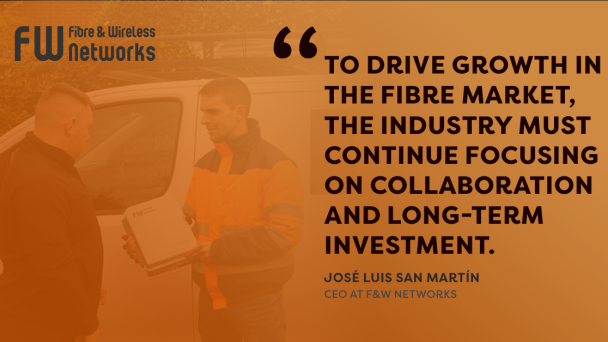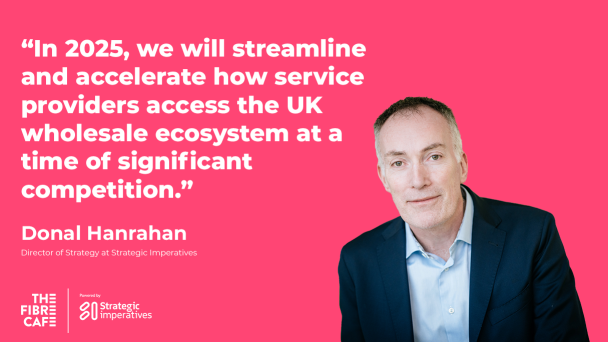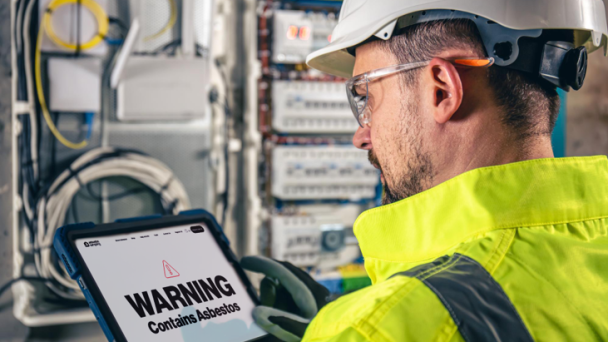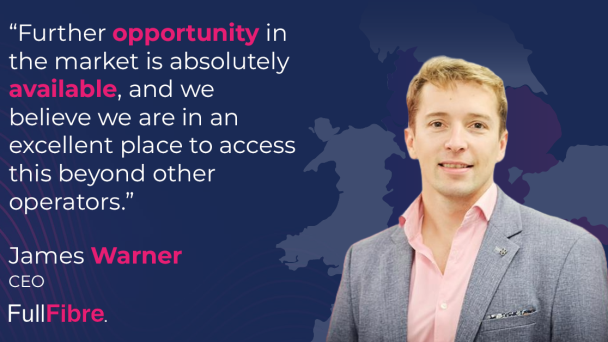Access is critical to empowering service provider success, according to Donal Hanrahan, Director of Strategy at Strategic Imperatives. Here he discusses his plans and priorities to ensure The Fibre Café, its cloud based, API-driven integration platform, continues to catalyse competition and drive positive outcomes.

F&W Networks CEO José Luis San Martín shares an update with FibreProvider.net on the altnet’s build and commercial progress and discusses where value is moving in the industry.
José Luis San Martín is a vocal advocate for closer collaborations across all facets of the industry. Here, he highlighted how altnet collaboration can reduce the costs and speed of deployment and create a united force in pushing for favourable regulations and incentives. He also illuminated wholesale collaboration as a way to create compelling customer outcomes and boost industry education.
Where is F&W Networks on its full fibre journey?
F&W Networks is in an exciting phase of our full-fibre journey. We’re focused on expanding our network utilisation within the south of England, where we’ve made significant strides. Through our Hey!Broadband subsidiary, we’ve hit 35,000 customers, which is a huge milestone for us. We’ve also announced our latest partnership with Gigabit IQ, which joins nine other brands.
Our network keeps growing at a steady pace, but concentrating on ensuring the commercialisation of our existing network is optimised allows us to expand more efficiently in areas where demand is more robust.
What are your current priorities and what are the main challenges and opportunities associated with these?
Our key priority is the commercialisation of our network, and a big part of that is focusing on growing our ISP partnerships. The main challenge is the letting customers understand that full fibre is the best technology available.
Some of the larger incumbents, are not widely delivering that message as they still serve (or underserve) a lot of their existing customers on older technologies, capable of lower speeds.
The opportunity here is to continue expanding our footprint in areas where there is high demand for fibre services, while also ensuring we stay ahead on efficiency and customer service.
What are your long-term goals in the UK fibre sector?
Our long-term goals revolve around three key areas that will enable us to remain a key player in the altnet market:
- Network expansion: Reaching more areas in the south of the England and potentially expanding further.
- ISP partnerships: One of our main long-term objectives is to work with a variety of ISPs on a more balance customer share for each one.
- Capital efficiency: Our focus on capital efficiency means we can reinvest in the network, reduce costs, and pass savings on to customers and ISPs.
How is F&W championing DEI in the sector?
Diversity, equity and inclusion are not just buzzwords; they’re part of our core values. We’re proud of the recognition we’ve received for our efforts in promoting diversity within the industry. DEI is a priority in every aspect of our business — from hiring practices to fostering an inclusive workplace culture. We believe a diverse workforce leads to more innovative solutions and better customer service.
We also want to set an example for the wider industry, encouraging others to recognise the value of diversity in driving both growth and innovation in the fibre sector.
Where is value moving in the UK altnet market and how are you positioned to capitalise on this?
Value in the market is increasingly shifting towards efficiency, both in terms of network build and operations. The market is becoming more competitive, and ISPs and consumers are demanding better quality and more affordable services. We’ve positioned ourselves to capitalise on this by focusing on capital efficiency and leveraging our strong local knowledge in the south of the England.
By continuing to refine our processes and partnerships, we aim to stay ahead of the curve in terms of delivering value to all stakeholders.
How can the industry better empower and drive growth for the fibre market?
To drive growth in the fibre market, the industry must continue focusing on collaboration and long-term investment. Altnets should work together to share infrastructure where feasible, reducing the costs of deployment and speeding up rollouts. It’s also crucial to push for clearer regulations and incentives that encourage further investment in fibre infrastructure.
ISPs and wholesalers need to work together to create compelling offerings that appeal to consumers. On the consumer side, there’s still a lot of work to be done in educating people about the benefits of full fibre and ensuring that the value proposition is clear.
How can a collaborative industry ecosystem deliver better results for the sector and its organisations?
A collaborative ecosystem can drive faster rollouts, reduce costs, and help prevent unnecessary duplication of infrastructure. We’ve already seen some examples of collaboration between altnets, and this will only increase as the market matures. Sharing infrastructure, makes economic sense and can help deliver broadband to communities faster and more efficiently.
By coming together as an industry, we can also work towards setting common standards and practices that benefit everyone, from the smallest altnet to the largest ISP. We’re open to working with other players to foster this type of collaboration and ultimately deliver better outcomes for consumers; our wholesale platform is up and running, with ISPs already working on it, so it is an example of a standard that can be shared among peers.
Has the industry done enough to address the education challenge/what more can be done?
The industry has made progress in educating both consumers and businesses about the benefits of full-fibre broadband, but there is still work to be done. Many people are still unaware of the speed, reliability, and futureproofing benefits fibre offers over copper-based broadband.
I believe more targeted education campaigns are needed, especially around areas that are still underserved. We must show consumers how fibre can improve their lives.
ISPs, wholesalers and industry bodies need to work together to deliver consistent, clear messaging about the value of fibre and how it can meet the needs of modern-day households and businesses.




